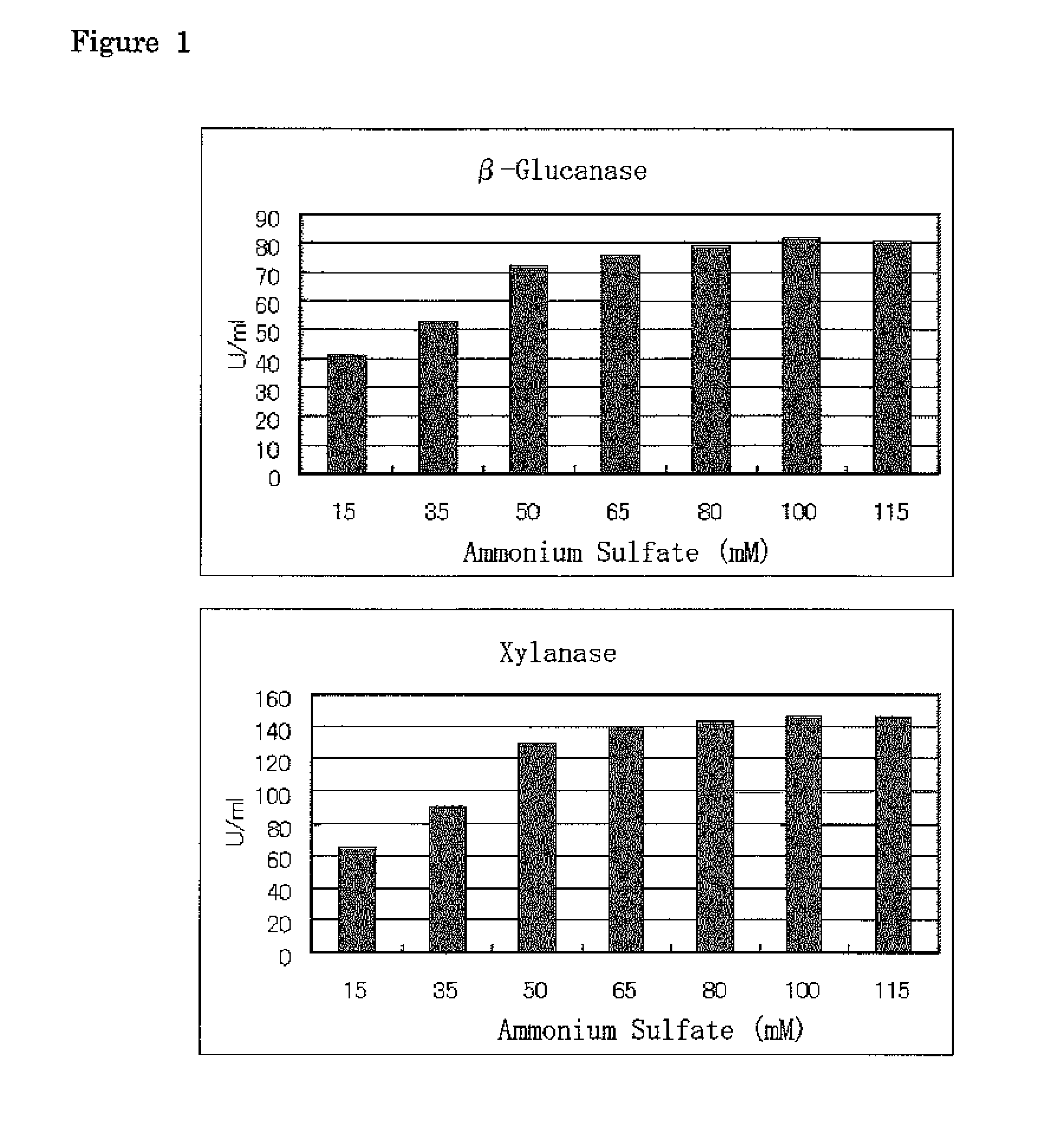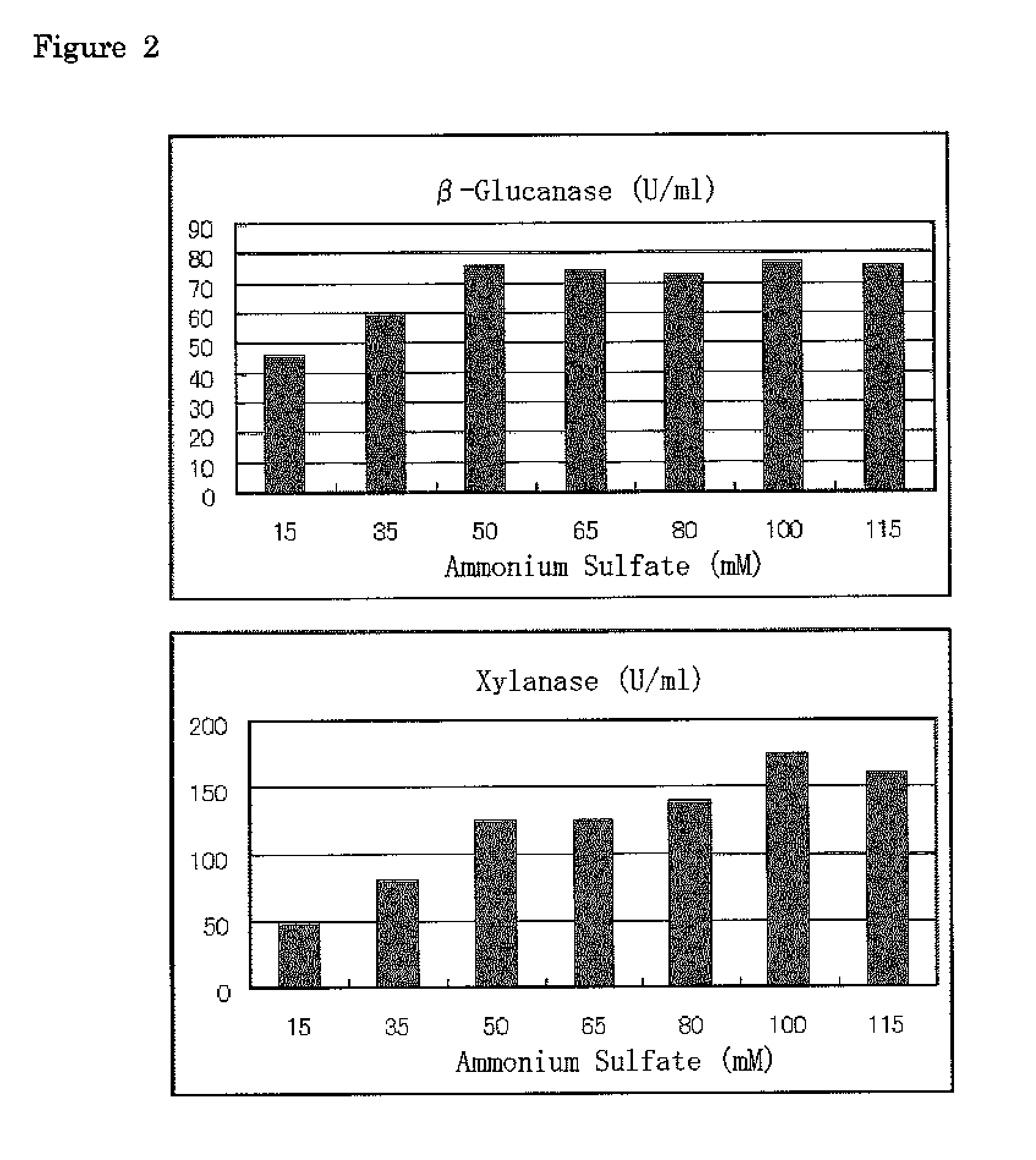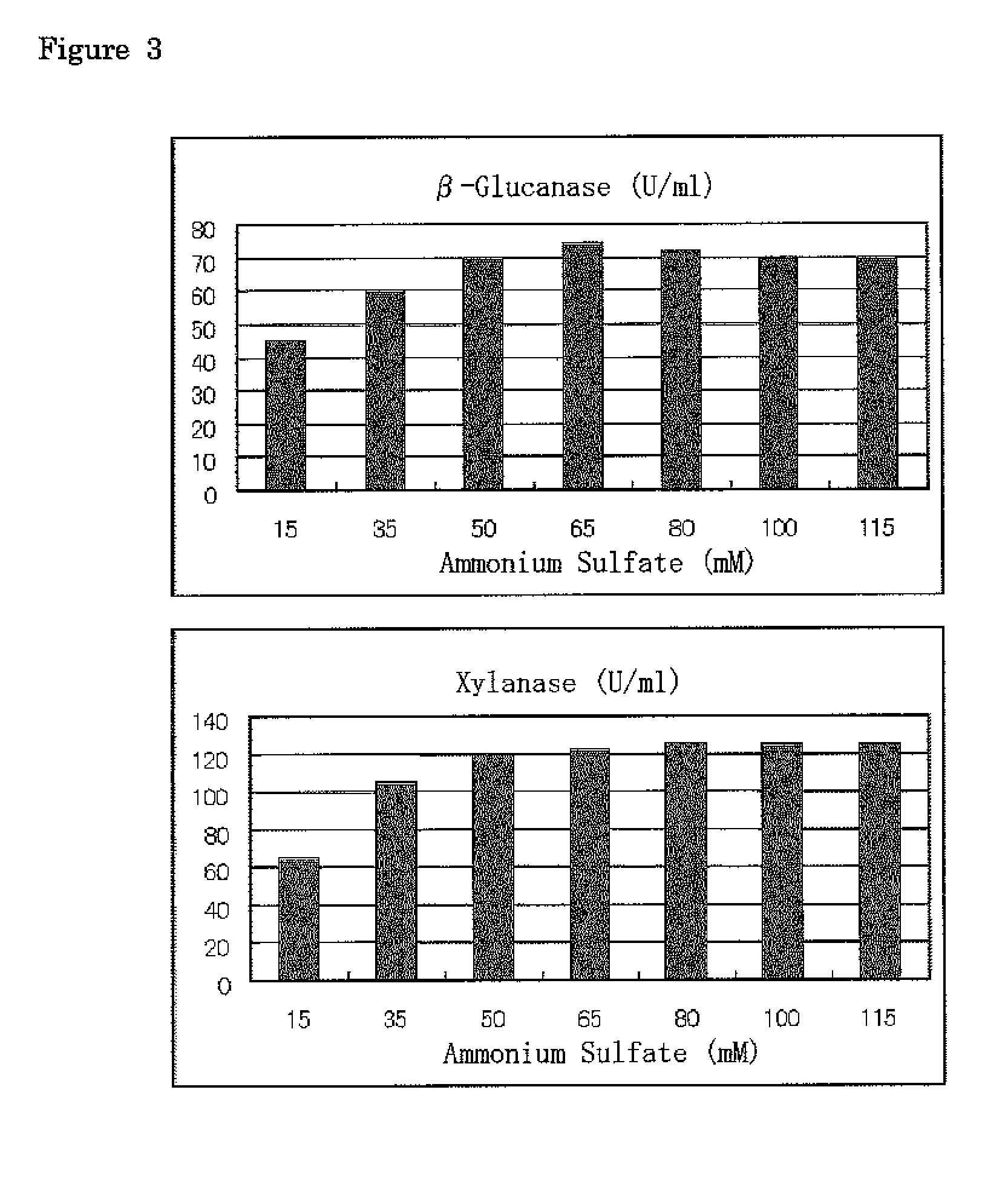Method for producing β-glucanase and xylanase, and liquid culture medium
a technology of xylanase and glucanase, which is applied in the direction of biochemistry apparatus and processes, microorganisms, enzymes, etc., can solve the problems of high cost, limited material usable as a carbon source, and high cost of crystalline cellulose, so as to achieve low cost, low energy consumption, and low impact on the environment
- Summary
- Abstract
- Description
- Claims
- Application Information
AI Technical Summary
Benefits of technology
Problems solved by technology
Method used
Image
Examples
example 1
[0058]Trichoderma reesei QM9414 (NBRC 31329) was cultured on a potato dextrose agar medium at 28° C. for 7 days, to sufficiently form spores. Crystalline cellulose, a carbon source of Mandel medium, was replaced with 3% of copy paper (3 g / 100 ml), and ammonium sulfate, a nitrogen source, was added so that the molar concentration of ammonia nitrogen became each 15 mM, 35 mM, 50 mM, 65 mM, 80 mM, 100 mM or 115 mM and adjusted to pH 4.8 with phosphoric acid and sodium hydroxide, to prepare 100 ml of a liquid culture medium in a 500-ml volume Erlenmeyer flask with baffles. One loopful of the cultured Trichoderma reesei was inoculated in this liquid culture medium and cultured with shaking at 28° C., 180 rpm for 7 days. The culture fluid was centrifuged on day 7, and β-glucanase activity and xylanase activity of the supernatant fluid were determined. The copy paper was not subjected to pretreatment such as alkali treatment or heat treatment, and was only cut into 2 mm×7 mm with a shredde...
example 2
[0063]According to the same manner as in Example 1, 3% of cardboard (3 g / 100 ml) was employed instead of the crystalline cellulose, a carbon source of Mandel medium, to prepare a liquid culture medium. Trichoderma reesei QM9414 (NBRC 31329) was cultured on a potato dextrose agar medium at 28° C. for 7 days, to sufficiently form spores, and one loopful thereof was inoculated in the liquid culture medium and cultured with shaking at 28° C., 180 rpm for 7 days. The culture fluid was centrifuged on day 7, and β-glucanase activity and xylanase activity were determined in the same manner as in Example 1. The results are shown in FIG. 2.
example 3
[0064]According to the same manner as in Example 1, 3% of newspaper (3 g / 100 ml) was employed instead of the crystalline cellulose, a carbon source of Mandel medium, to prepare a liquid culture medium. Trichoderma reesei QM9414 (NBRC 31329) was cultured on a potato dextrose agar medium at 28° C. for 7 days, to sufficiently form spores, and one loopful thereof was inoculated in the liquid culture medium and cultured with shaking at 28° C., 180 rpm for 7 days. The culture fluid was centrifuged on day 7, and O-glucanase activity and xylanase activity were determined in the same manner as in Example 1. The results are shown in FIG. 3.
PUM
| Property | Measurement | Unit |
|---|---|---|
| pH | aaaaa | aaaaa |
| pH | aaaaa | aaaaa |
| temperature | aaaaa | aaaaa |
Abstract
Description
Claims
Application Information
 Login to View More
Login to View More - R&D
- Intellectual Property
- Life Sciences
- Materials
- Tech Scout
- Unparalleled Data Quality
- Higher Quality Content
- 60% Fewer Hallucinations
Browse by: Latest US Patents, China's latest patents, Technical Efficacy Thesaurus, Application Domain, Technology Topic, Popular Technical Reports.
© 2025 PatSnap. All rights reserved.Legal|Privacy policy|Modern Slavery Act Transparency Statement|Sitemap|About US| Contact US: help@patsnap.com



